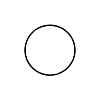Image, Secret, & Hated Friend
For me, it's been a great week in film. Movies I watched that are not making the newsletter include The Exterminating Angel, Perfect Blue, and Heat. But I managed to see some freaky horror (and horror-adjacent) stuff too—all exciting, crowd-pleasing fare, for horror-heads or horror dabblers. They'd all serve as fine pathways into spooky season . . .

From the Grave.
Three ideas from horror cinema's past.
The fake documentary and the found footage horror film are related subgenres both formally and because they’re often underappreciated. They’re cheap to make and assume real technical and story-level limitations: the possibilities of cinematographic style can be rigid and baked into the premise, and the motivation for all the filming during life-threatening scenarios tends to strain credulity. As with all subgenres, but especially with subgenres that attract no-budget first-timers (no shade), there are many unremarkable entries. Joel Anderson’s 2008 Lake Mungo—a fake documentary featuring a lot of found footage material—stands out as a beloved entry in both genres. Its Wikipedia page links to fifteen different “best found footage films”-type lists it appears on. Watching Lake Mungo, this makes lot of sense. It’s (almost) plausible as a real documentary, and it’s weird, creepy, and creative—on a story-telling level, but especially on a visual one.
- Lake Mungo is a film obsessed with knowledge. Its central family, at the end (“spoiler” here and more below), believes the haunting is over because they’ve discovered everything they didn’t know about Alice, their dead daughter/sister. But we have reason to believe—ever the case in this film—that things are not so neatly finished and that there's more to know. Lake Mungo is full of images that hold secrets and that must be peered at again and again. To cite one instance, there’s an innocuous photo of a backyard which, on close inspection, seems to contain the ghostly figure of the dead girl. Later, this is debunked (it’s a fake). But later still, there’s another ghostly detail revealed that’s hiding elsewhere in the photo. This is a recurring pattern—an image must be interrogated again and again. Everything must be double-checked (or triple-checked). Images here are unstable and so are we. We see new things every time we look.
- Lake Mungo’s characters, on the other hand, are invested in “closure”—something they link to knowledge, to knowing. The family believes they’ve attained some kind of closure once they know everything, even if the haunting is not, as they believe it to be, over at all. And who's to say, of course, that they haven't achieved some kind of useful psychological culmination of their grief process. We might recognize this notion from true crime or newspaper articles about family members of missing people—the idea that knowing more, knowing what happened, will provide a sense of closure. But given our relationship with images and footage in Lake Mungo—our understanding is never final, there’s always the possibility of another reveal—this is a world where final knowledge, where closure, is ephemeral. Early in Lake Mungo, Alice’s father must identify her body, but her mother doesn’t participate. The father believes that this deprived the mother of closure. And indeed she begins to doubt her daughter’s death. But so too does the father, though he saw the body with his own eyes. Ultimately they ask for the body to be exhumed. As the ever-revelatory images have taught us, nothing in this world is settled. There is no true closure. Here, it never hurts to take another look.
- To watch Lake Mungo is to experience the question, repeatedly, “What am I seeing?” One factor here is the reliance on lower-quality pictures and footage—images and footage from within the world of the movie, not motion picture-grade stuff. One of the most important pieces of footage comes from a teen’s cell phone (in 2008 the quality was quite terrible). The result (shades of 2022’s Skinamarink) is a film that forces the viewer’s eye to reckon with technological limits—with grain, blur, image noise, artifacts, and with photos blown up so much that what’s visible is vague, imprecise, ghostly. Of course, for a film about paranormal events, this is perfect. Anderson finds the uncanny in technological limits. They provide the hazy shapes, in the dark, that ghost stories require.

Right Behind You.
A thought on horror's present.
- Dark comedy/drama Twinless doesn’t stray very far into horror, but it seethes with tension. While its trailer (at least the one I saw) promises a certain type of tension—“What’s the secret?”—the film itself confronts us with something different, revealing the secret early and asking, instead, “What the hell is going to happen when this all comes out?” It’s an instructive distinction. Both are potent dramatic devices, but the latter (“What will happen!?”) produces a particular type of dark cloud. It’s one thing to suspect an awful thing, but it’s another to know it. There’s a sense of impending violence in Twinless because we know so much so soon.

Living Deliciously.
A recommendation.
- Sophia Takal’s 2016 Always Shine stars Mackenzie Davis and Caitlin FitzGerald as best friends who hate each other—something we and they learn as the two reconnect on a trip to Big Sur and things spiral out of control. FitzGerald’s wonderful as the woman who’s a little too self-satisfied, and a little too judgy, as her acting career lifts off, and Davis is terrifying as her simmering-with-resentment friend. Takal's rendering of the ambient misogyny that the two move through in Hollywood creates a clarifying context for the charge of their friendship. We’ve seen stories where jealousy, hatred, and envy culminate in extreme rupture, identity blurring, and dissociation, but never like this—never quite handled with this array of destabilizing choices. This is a film of role reversals, costume swaps, hallucinations, repetition, and dream-warped revelations. It’s a psychological horror gut-punch that held-up entirely on a rewatch (free with ads!).
Dead of Night publishes every Tuesday. Today the malevolent, fascist U.S. president told the U.N. that climate change is a "con job" even though it is, in reality, a defining crisis of our time. The moment to resist is now.